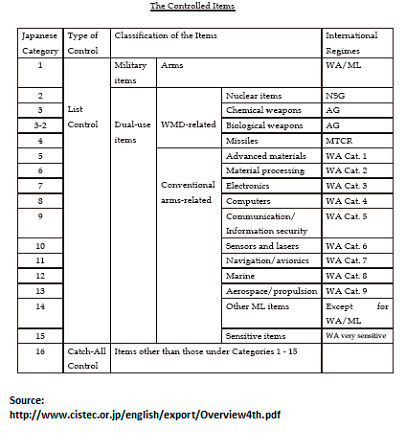While many global companies based in the United States have dedicated resources to making sure they fully understand U.S. and, perhaps, EU export control regulations, there is a growing need to understand the export rules for an increasing number of countries from which companies’ export products, software, and technology. It is no longer reasonable to assume that an understanding of U.S. export controls for a product will be sufficient to know how a product will be treated when exported or re-exported from a country other than the U.S.

More Countries Implementing Multilateral Export Controls
The "big four" multilateral export control regimes with which most people are familiar are: The Wassenaar Arrangement, the Missile Technology Control Regime, the Australia Group, and the Nuclear Suppliers Group. At their core, these regimes put restrictions on exported items (and software and technology) that are considered "dual use" (i.e., can possibly be used for both civilian and military purposes) or are clearly designed for military purposes. Over time, more countries have joined one or more of these groups and have implemented, or are in the process of implementing, the obligatory export controls.
The challenge is in keeping up with what countries are currently participating in these agreements and the current stage of each implementation. For example, while Malaysia is not currently a regime member, it has implemented an export control policy that leverages the common multilateral control list category structure (see Strategic Trade Act of 2010). India has had its own version of an export control list called SCOMET (Special Chemicals, Organisms, Materials, Equipment and Technologies), but was recently accepted as a Wassenaar member after updating the SCOMET to encompass Wassenaar considerations (India's export control in line with Wassenaar Arrangement: Government).
Combined vs. Separate Lists
A key consideration for implementing an effective export control procedure for any country is to know how the country designates controlled items. While the U.S has one list for items that are considered dual use and another list for military items (the Commerce Control List vs. the Munitions List) and are found in different places, some countries make both lists available in the same document, or combine all items into one list. For example, the United Kingdom has a single document that contains multiple lists (Consolidated list of strategic military and dual-use items), while Japan combines dual use and military controlled items into a single list:

Periodic Updates to Lists
Changes are periodically made to export control lists based on multilateral or country specific considerations. For example, under the Wassenaar Arrangement, member countries meet to consider changes to export controls. In a statement issued by the Plenary Chair on 2017 outcomes, the following changes were noted:
"New export controls in a number of areas, including military explosives and specific electronic components.
Existing controls were further clarified regarding ground stations for spacecraft, submarine diesel engines, and technology related to intrusion software, software for testing gas turbine engines, analogue-to-digital converters, non-volatile memories and information security.
Some controls were relaxed, such as for mechanical high-speed cameras and digital computers."
Perhaps the most important point regarding these changes is that different member countries are unlikely to update their own export control lists and policies according to the same timetable, thereby, requiring closer monitoring country by country.
As an example of changes specific to an individual country, one has to look no further than the Export Control Reform initiative that has been underway in the United States since 2010. Exporters must be aware of the changes regarding movement of items from the U.S. Munitions List to the Commerce Control list, and the impact the changes may or may not have on their local and global licensing procedures.
Conclusion
Due to the growing interest by countries around the world in implementing export control programs like those used by the U.S. and EU, the frequent changes to controls made multilaterally and locally, and the different ways controls are implemented on a country by country basis; it is imperative that companies operating globally understand all of their export control obligations and monitor changes over time.
Ideally, companies should have a single data repository for export control classification numbers assigned to their products. This way, when different classification models across countries exist, they can be clearly called out. Knowing the true classification for a given country will determine the existing control level when exported from that country and what licenses may be required. Staying in compliance with export control regulations around the world is critical for maintaining the ability to freely operate in the increasingly global economy in which we find ourselves. Bad publicity, fines, and the loss of export privileges can cut short any company's global expansion plans.
Thomson Reuters ofrece esta solución integral para la gestión centralizada de la fiscalidad corporativa y la cadena de suministro. La tecnología e información líderes del mercado integradas en una única plataforma. Personas, procesos y datos conectados, maximizando los niveles de eficiencia y cumplimiento.
